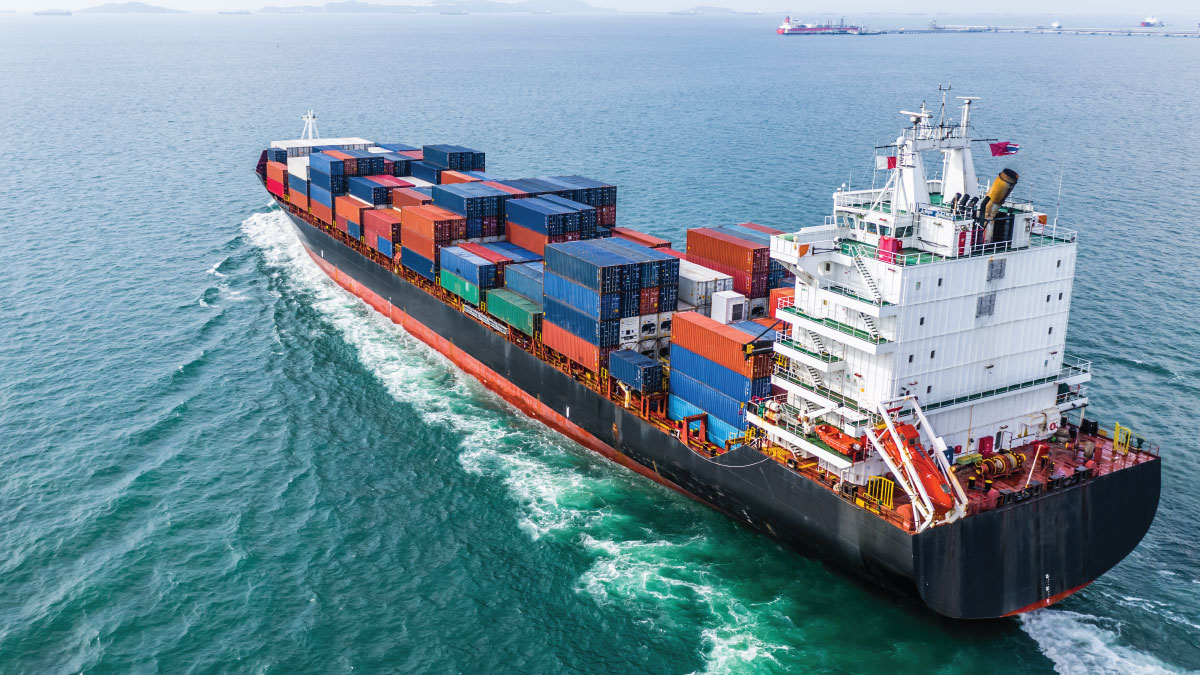By Mark Assaf, Economist, UNCTAD
A cargo container ship sailing. © Kalyakan
The maritime industry and ports are capital-intensive sectors. They’ve transitioned over the decades, based on the principle of economies of scale, massification and the integration of several key players into giant logistics supply chains.
The quest for optimization has made the just-in-time concept “king of the game”. The big question remains: Is this model relevant in responding to the current (exceptional) pandemic-induced circumstances and beyond?
Over the last few months, a series of negative shocks that have rippled in a short period at an unprecedented scale have exposed serious weaknesses in global supply chains.
The global transport and logistics system is built on taking advantage of optimal costs of inputs and creating added value around the world with the lowest possible maritime transport costs.
Moving components several times through different vessels on various maritime routes until they reach their final destinations has been the standard procedure since containerization began in the 1960s.
Numerous disruptive factors
The maritime industry has witnessed numerous disruptive factors created by the COVID-19 pandemic and the trade war between the United States and China.
These include trade imbalances, lockdowns (full and partial), quarantines, shortages of critical staff, scarcity of medical supply, high dependency on self-limited factories around the world, operational challenges beyond existing scenarios and sophisticated cyberattacks.
Another challenge is the critical financial state of the world’s shipping titans that need high volumes to justify their economic models and the sheer size of their operations at global scale.
But how much of it is a self-fulfilling prophecy and to what extent are some operators taking advantage of this window of opportunity to earn excessive profits during lean times for others?
So far, 2021 has fallen well short of growth and recovery expectations around the world except for China.
While the ongoing delivery of COVID-19 vaccines is good news, most economic operators are working below their production capacity and postponing activities in the hope of a miracle to solve their problems.
Every sector was hoping to bounce back in 2021 and recover lost profits. But looking at the losses in the tourism sector that collapsed in the wake of the pandemic, it’s certain that we haven’t seen the bottom of it yet!
The knock-on effects of ongoing price hikes in the maritime industry and logistics transportation of everyday merchandise could continue for the rest of 2021.
Could a new dramatic event – such as the Evergreen-operated ship jamming the Suez Canal or the Port of Yantian (in China) being bypassed due to COVID-19 cases – send new shockwaves through the already overstretched logistics system?
In search of alternative solutions
Operators are now looking at alternative solutions such as developing air-sea transport models, loading non-container vessels, creating buffer stocks and areas. But supply chain transformation will not happen overnight. And in this case, size matters.
The one and probably only positive effect of the pandemic – increased digitalization – will certainly improve operations and make the various and complex mechanisms of merchandise trade by sea more efficient in pure arithmetical terms.
Complex algorithms and models calculate optimal voyages and the related cargo movement through different operative modes. But this is not enough to mitigate the exceptional challenges facing the industry right now and likely to persist for a long time.
Frighteningly, no one knows if and when the world will be declared pandemic free and when we’d need to work backwards on the steps to get back on our feet.
One road to recovery
The one road to recovery and to get over the worst effects of the pandemic is through learning to live with COVID-19 as fast as possible to give time for normal flows of international merchandise trade to operate in calm waters and alleviate the self-imposed constraints to the system.
We are all operating under one global system and there is no back-up!
To boost recovery efforts, the UNCTAD TrainForTrade programme is providing capacity-building support to a large network of port operators around the world, with 870 participants from 99 countries taking part in online activities to share their experiences and mitigation measures to cope with the pandemic.

